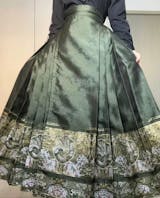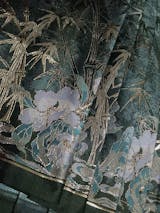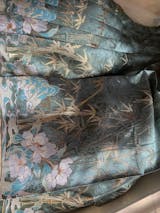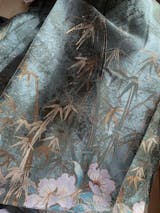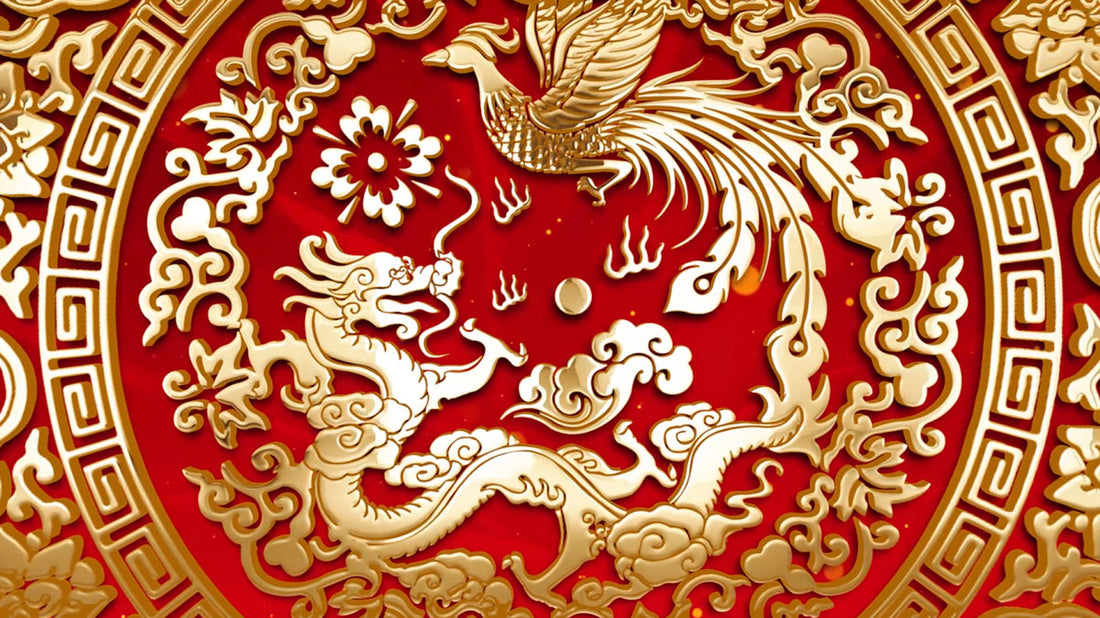
Exploring the Delicate Craftsmanship: An Overview and Appreciation of Chinese Paper Cutting Art
1. What is paper cutting art?
Paper cutting is a form of folk art in China. It is an artistic creation using paper as the medium and scissors (or knives) as the tools. As a form of hollowed-out art, it provides a visual sense of transparency and artistic enjoyment. One important characteristic of paper cutting art is that all images are created in delicate and transparent forms. This requirement not only stems from the tools and materials used in paper cutting, but also serves the practical purpose of allowing light to pass through. This is especially crucial for "window flowers," as a solid black paper cutout would block the outdoor light and be neither transparent nor aesthetically pleasing." (Note: The term "window flowers" refers to paper cutouts that are traditionally placed on windows in China for decorative purposes.)
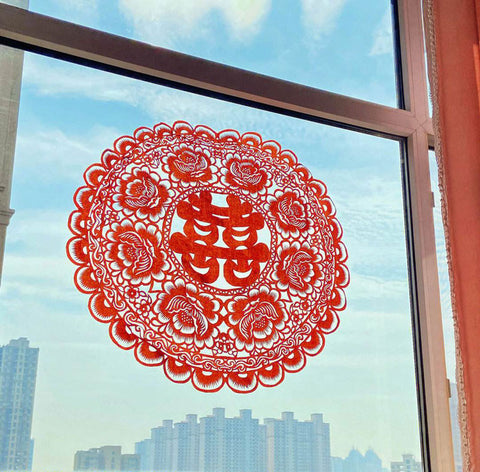
2. The enlightenment stage of paper-cutting art
Paper cutting art is one of the oldest forms of folk art in China. From archaeological discoveries, it is believed that paper cutting art emerged during the Northern Dynasties (386-581) and has a history of 1,500 years. During that time, people used thin materials and employed techniques such as carving, hollowing, picking, engraving, and cutting to create crafts. These techniques were applied to materials like gold foil, leather, silk, and even tree leaves for the purpose of carving patterns.
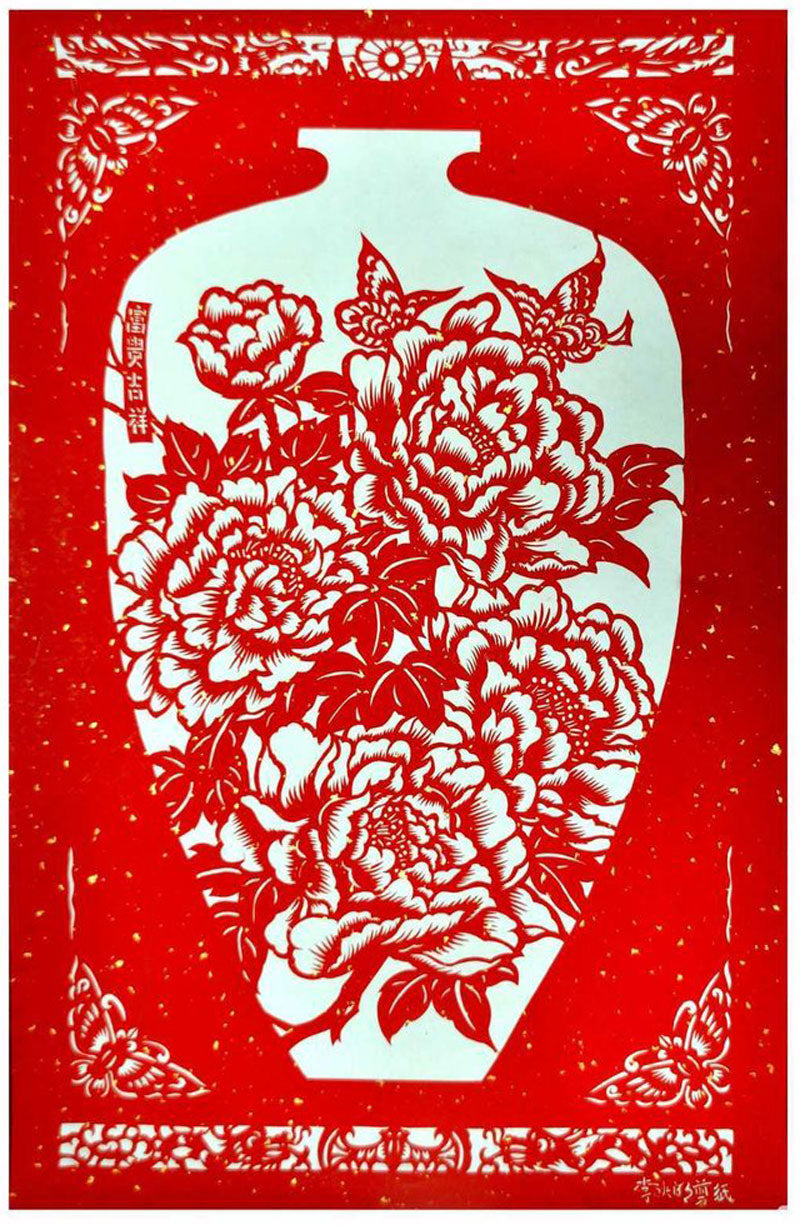
3. The development of paper cutting art in the Tang Dynasty
During the Tang Dynasty, paper cutting art entered a period of great development. In Du Fu's poem "Peng Ya Xing," there is a line that says, 'Warm soup washes my feet, paper cutting beckons my soul,' indicating that the custom of using paper cutting to summon spirits was already circulating among the people at that time. In the poem "Cai Sheng," it describes the graceful movements of Tang Dynasty women as they cut and presented paper cutouts: 'Cutting and gathering, presenting to loved ones, silver hairpins adorned with true phoenix. Leaves follow the golden knife, flowers accompany the jade fingers, creating new scenes of beauty with each cut.'
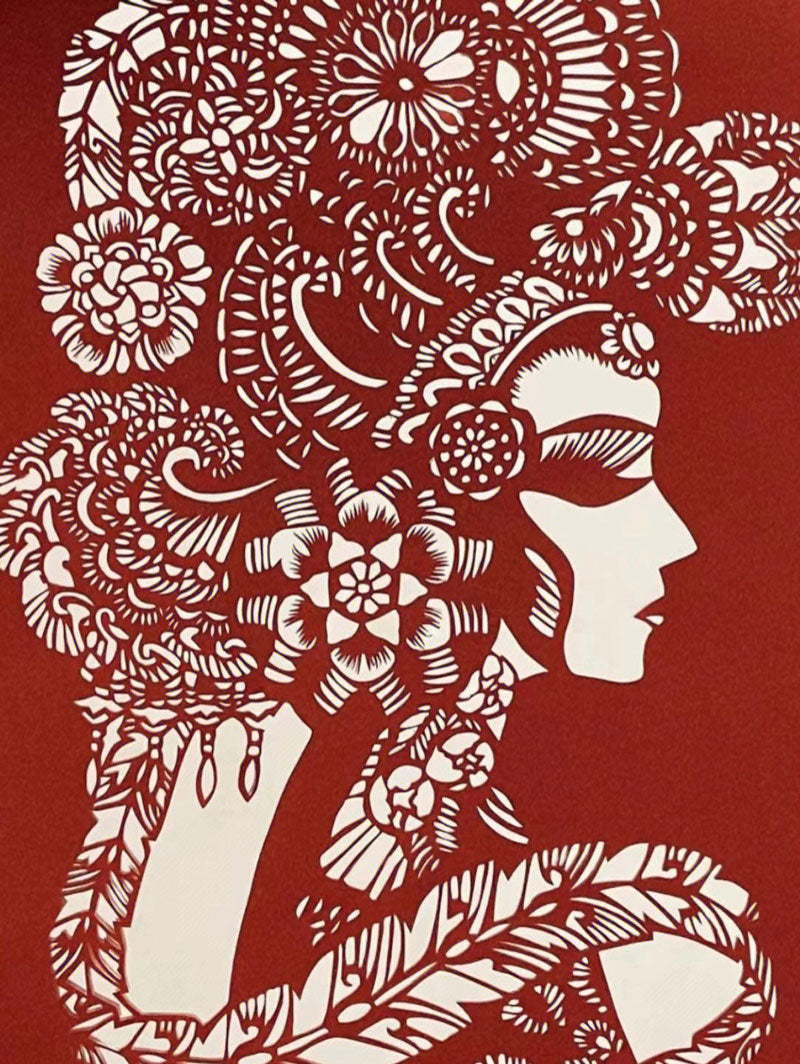
[The paper-cut artwork titled "young girl" by a folk artist ]
4. The widespread use of paper cutting art in the Song Dynasty
With the maturity of the papermaking industry in the Song Dynasty, the paper cutting industry and renowned paper cutting artists began to emerge. There were various types of paper products, such as the 'lihua' used as folk gifts, 'chuanghua' pasted on windows, and decorations for lanterns and tea cups. The application of paper cutting in folk art gradually expanded during the Song Dynasty. For example, the Jizhou Kiln in Jiangxi Province used paper cutting patterns on ceramics, enhancing their beauty through glazing and firing. In folk art, paper cutting was also used to create shadow puppetry figures by carving animal skins such as donkeys, cows, horses, and sheep. Additionally, the technique of paper cutting was employed in the production of hollowed-out patterns for blue calico fabric, where oil paper boards were carved and scraped to create floral patterns for printing." (Note: "lihua" refers to decorative paper flowers, and "chuanghua" refers to paper cutouts pasted on windows for decorative purposes. The Jizhou Kiln is known for its ceramic production during the Song Dynasty.)
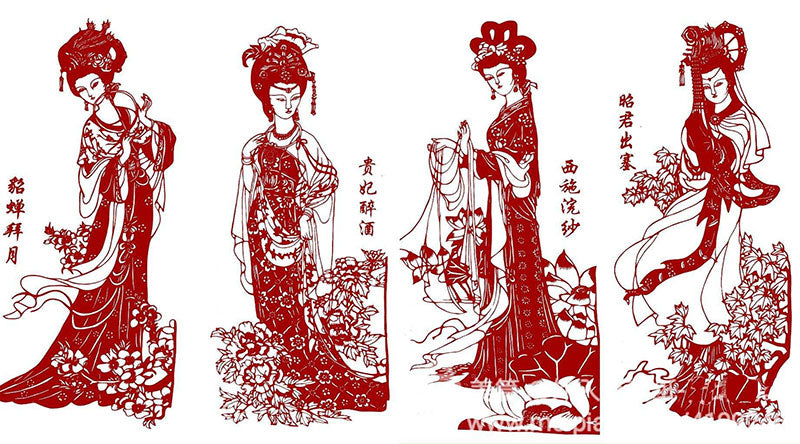
[The paper-cut artwork titled 'The Four Beauties of China' by a folk artist.]
5. The golden age of paper cutting art in the Ming and Qing Dynasties
During the Ming and Qing dynasties, the art of paper cutting reached a mature stage and reached its peak. The application of folk paper cutting art became even more extensive. It was used for decorations on folk lanterns, patterns on fans, and even as inspiration for embroidery designs. Almost every decorative item, including those used in household settings, such as door decorations, window cutouts, cabinet embellishments, auspicious ornaments, and ceiling decorations, involved the use of paper cutting as a form of artistic enhancement.
Note: "Lanterns" refer to traditional Chinese lanterns used for festive occasions, and "auspicious ornaments" are decorative items believed to bring good luck and fortune.
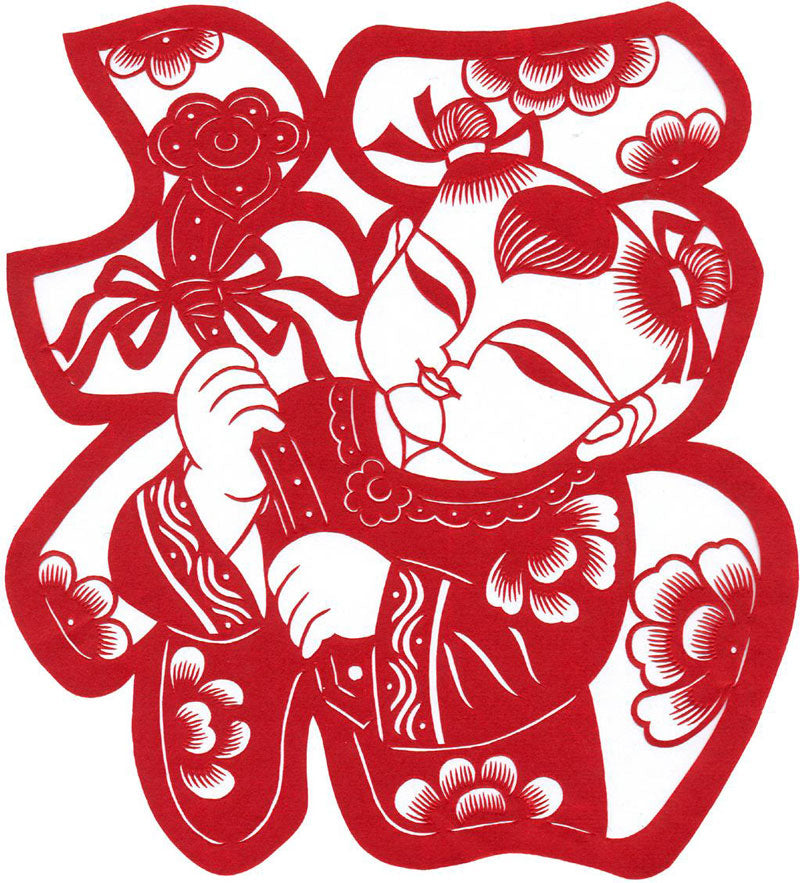
[Appreciation of the folk artist's paper-cut artwork "Fuwa"]
Although paper cutting art originated from folk traditions, it became a popular art form for people of all classes during the Qing Dynasty. Even the royal family and nobility of that time were fond of paper cutting. In the Kun Ning Palace of the Beijing Forbidden City, which served as the bridal chamber for imperial weddings, black paper cutouts in the shape of the Chinese character 'xi' (meaning 'double happiness') adorned the corners of the windows, while black paper cutouts of dragon and phoenix motifs decorated the center of the ceiling. (Note: The Beijing Forbidden City, also known as the Palace Museum, was the imperial palace complex of the Ming and Qing dynasties. The Kun Ning Palace was a specific palace within the Forbidden City.)
6. The modern development of paper cutting art
In the early 20th century, during the May Fourth Movement, a new cultural movement in China, progressive intellectuals such as Cai Yuanpei, Lu Xun, Liu Bannong, and Zhou Zuoren laid the foundation for Chinese folklore studies. They extensively collected folk literary materials and also made efforts to collect folk art, including folk paper cutting. In the 1930s, artist Chen Zhinong began researching and creating folk paper cutting in Beijing. He depicted a wide range of customs and sentiments in old Beijing through sketches and silhouettes, capturing scenes of street vendors, craftsmen in workshops, food stalls and tea vendors, marketplaces, and idle people in the neighborhood.

[The artwork 'In the Spring' by paper-cut artist Gao Shaoping depicts a panoramic view of spring activities, symbolizing favorable weather, national prosperity, and social harmony.]
After the establishment of the People's Republic of China, under the guidance of the policy of 'letting a hundred flowers bloom and a hundred schools of thought contend', artists created a large number of new paper cuttings that depicted the new people and events of socialist society. This opened up new avenues for paper cutting creation and enriched the forms and content of Chinese folk decorative arts. In addition to portraying various professions and industries, themes such as children, sports, acrobatics, and dance became the most common subjects in the creation of new paper cuttings.
7. The classification of paper cutting art
In general, paper cutting patterns can be roughly categorized as follows: figures, birds and animals, text, tools, scales and shells, flowers and trees, fruits and vegetables, insects, landscapes, as well as rare world objects and modern items, making a total of 11 categories.
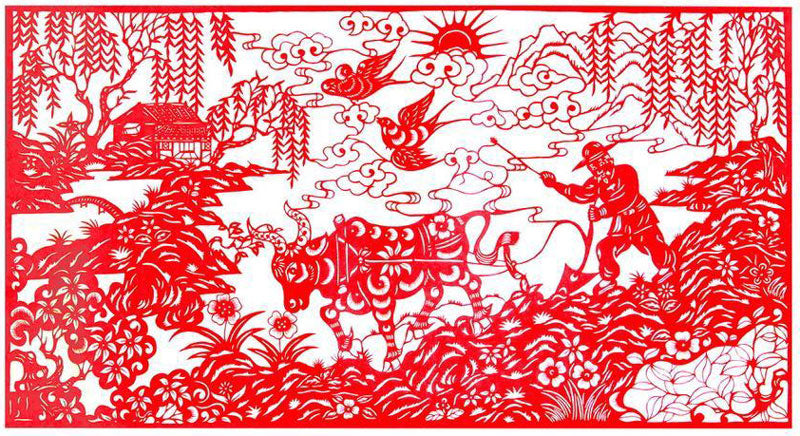
[The artwork 'Spring Ploughing' depicts the busy season of farming, portraying the scene of diligent farmers toiling in the fields.]
Based on the themes and meanings portrayed, paper cuttings can be divided into seven categories: auspiciousness, blessings, warding off evil, dispelling wickedness, encouragement, vigilance, and amusement. Some people also believe that the classification of paper cuttings should be based on their purpose, which can be further divided into: (1) decorative category: paper cuttings that are pasted on other objects for appreciation or to enhance their beauty, such as window decorations; (2) folk belief category: paper cuttings used for worship, blessings, warding off disasters and evil spirits, such as door gods; (3) template category: paper cuttings used for printing and dyeing, such as embroidery patterns; (4) design category: paper cuttings that enhance the beauty of other objects or promote them, such as film or television opening credits.
8. The significance of paper cutting art in today's world
The art of paper cutting has never ceased since its inception in Chinese history. It is deeply embedded in various folk activities and is one of the most culturally rich art forms in Chinese folklore. Even today, during festivals or joyful occasions such as weddings, Chinese people still adorn their homes with beautiful and vibrant paper cuttings on windows, walls, doors, and lanterns, creating a more festive atmosphere. Behind the art of paper cutting lies people's longing and aspirations for a better life.

[Dragon and Phoenix Bringing Auspiciousness: Paper cutting Artwork]

[Salute to the Brave: Paper cutting Artworks Honoring the Frontline Heroes during the COVID-19 Pandemic]


